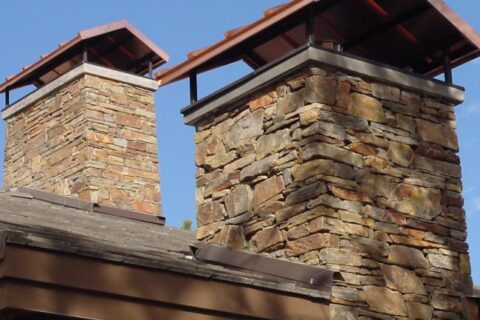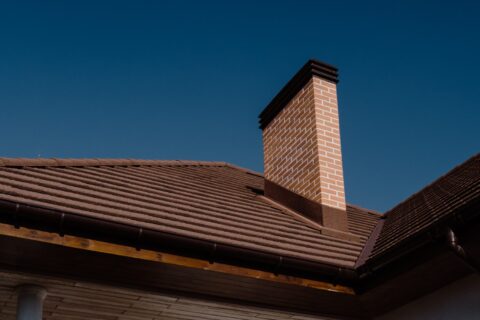What is Flashing, and Why Should I Worry About It Failing?
When the next summer thunderstorm rolls through or your neighborhood simply gets pounded with a torrential downpour of rain, you might notice some dripping coming in from the ceiling or along the walls. “Oh no,” you think. “A leaky roof!”
But it might not necessarily be the roof that’s the problem behind the leak. It might be your chimney — specifically, the flashing around your chimney. During this last little bit of summer, we want to raise awareness of what chimney flashing is, what can happen when it starts to fail, and what you can do to prevent failure from happening. This can ensure you have a dry, damage-free home, as well as a chimney that’s in tip-top condition when winter comes around.
Here are some questions you might have about flashing:
First off, what is flashing?
To give you the best idea of what flashing is and why it’s important, let’s picture the structure of your house — specifically, how it is built around your chimney. Technically, your chimney isn’t attached to the frame of the rest of the structure. The chimney comes through your roof, but there are always going to be minuscule gaps between the chimney and the roof. That’s where flashing comes in.
Flashing is made up of narrow pieces of sheet metal — usually aluminum or galvanized steel because of their durability, but sometimes copper or other material — that goes along these cracks around the edge of the chimney where it meets the roof. Flashing prevents water from going in these cracks, and it directs the water away from these leak-proof areas.
In addition to wrapping the chimney where it joins the roof, flashing will sometimes be installed around other structural aspects like a dormer or a skylight.
How does flashing actually start to fail?
Unfortunately, flashing isn’t something that will hold up forever. Even when it is made of high-quality material and installed properly, old age and the elements will take their toll on flashing. This is when flashing starts to fail.
Flashing can fail in several ways. First, a house might settle or shift after it is built. Shifting might also occur because of natural disasters like an earthquake or flooding. Sometimes massive construction projects in the area that disrupt the ground to a great extent can cause a house’s foundation to shift ever so slightly. Even minor shifts are enough to pull the flashing apart from the chimney.
Flashing can also start to fail because of the freeze-thaw cycle your home endures every winter. When the temperatures drop below freezing, any water surrounding the flashing will expand. When the temperatures rise and that ice thaws, it will leave gaps where the ice was. This leaves tiny gaps in the flashing that get bigger and more significant over time. Flashing can even become rusted through when exposed to enough rain and moisture over time.
What happens when my chimney flashing fails?
The most significant problem you’ll face when your chimney flashing starts to fail is a leak. In fact, failed flashing is the number one cause of home leaks — surpassing any other cracks or structural problems that roofs normally see.
It goes without saying that leaks pose a major problem to homes. Leaks from failed flashing can cause rotten wood in the roof or other parts of your home, flooded attics, damaged ceilings and walls, mold and mildew, and even damage to your furniture. That’s why it’s important to address failed flashing as soon as possible.
How can I prevent my chimney flashing from failing, or how can I fix it when it does fail?
While failed chimney flashing is sometimes an inevitable part of an aging property, there are times when the failure is preventable. Poor installation is actually the most frequent reason that flashing tends to fail. Make sure your chimney flashing is installed by a reliable, certified chimney sweep or roofing professional. Installing your chimney flashing is not something that a homeowner should try to DIY by themselves.
Damaged flashing can sometimes be patched up with caulk, cement, or other materials, but don’t expect these to be long-term fixes. They should be considered only temporary to keep water out until you’re able to replace the damaged flashing. Having an annual roof inspection and chimney inspection will help determine the lifespan of your current flashing and plan accordingly when the flashing starts to show signs of wear. At this point, your chimney or roofing professional can provide guidance as to how much of the flashing needs to be replaced and how quickly the problem needs to be addressed.


